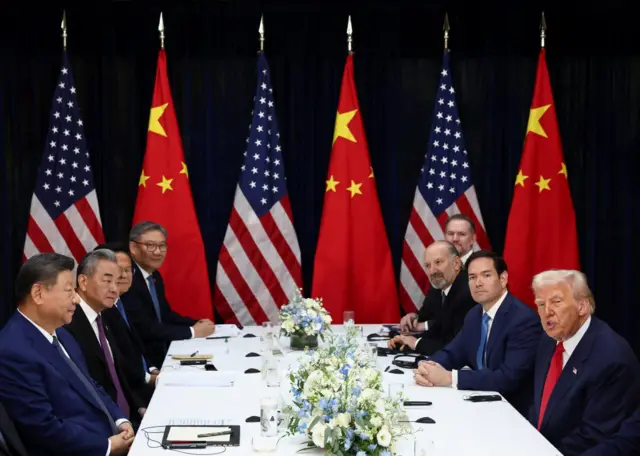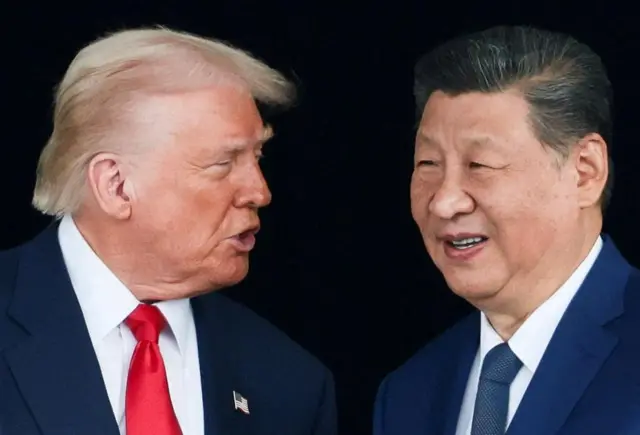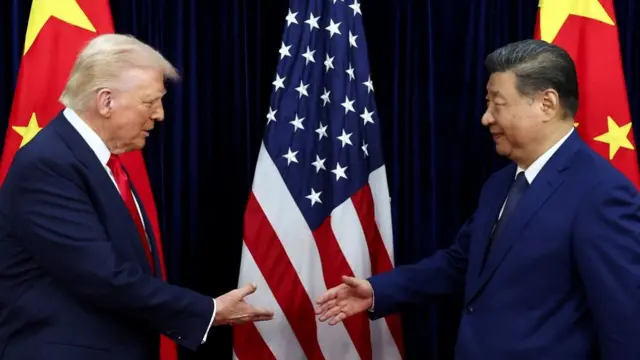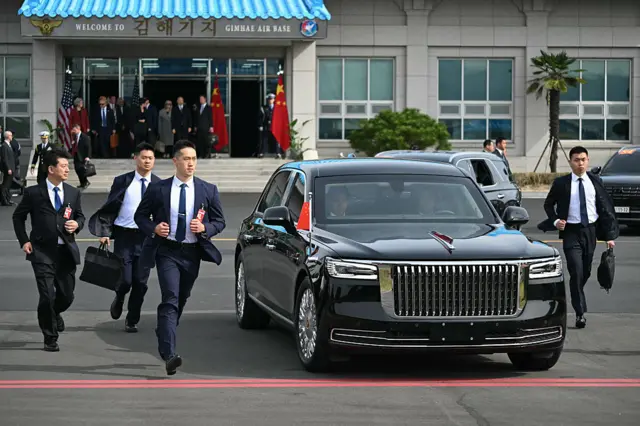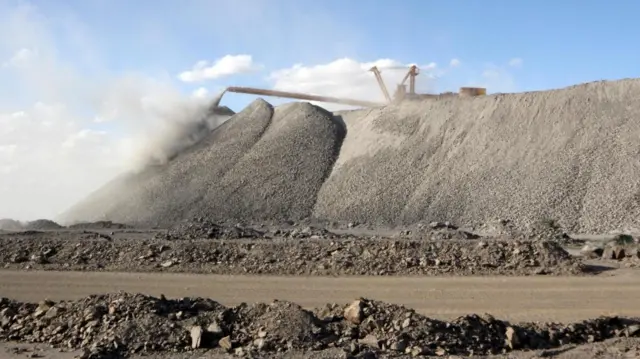A '12 out of 10' meeting between Trump and Xi - but not a done deal yetpublished at 13:46 GMT 30 October
 Angus Thompson
Angus Thompson
Live reporter
 Image source, Reuters
Image source, ReutersUS President Donald Trump has praised an "amazing" meeting with China's Xi Jinping, following a series of announcements bridging trade between the world's largest economies.
The pair met at Busan airport in South Korea, to cap off Trump's whirlwind tour of Asia - and the meeting ended in a partial stand-down in ongoing trade tensions, including a reduction of tariffs on some Chinese goods entering the US.
On Beijing's part, it has agreed to suspend export controls on rare earths - critical for technology from electric vehicles to smartphones - while Trump has said China will also buy "massive" amounts of soybeans, and other farm products.
In words relayed by our North America correspondent Anthony Zurcher, Trump said aboard Air Force One that he rated the talks a “12 on a scale of one to 10”.
The agreements will have global ramifications. But, as our China correspondent Laura Bicker points out, there is no ink on paper for a deal between two superpowers who have spent much of this year trading economic threats.
We're now ending our live coverage. You can read more in our news story.
